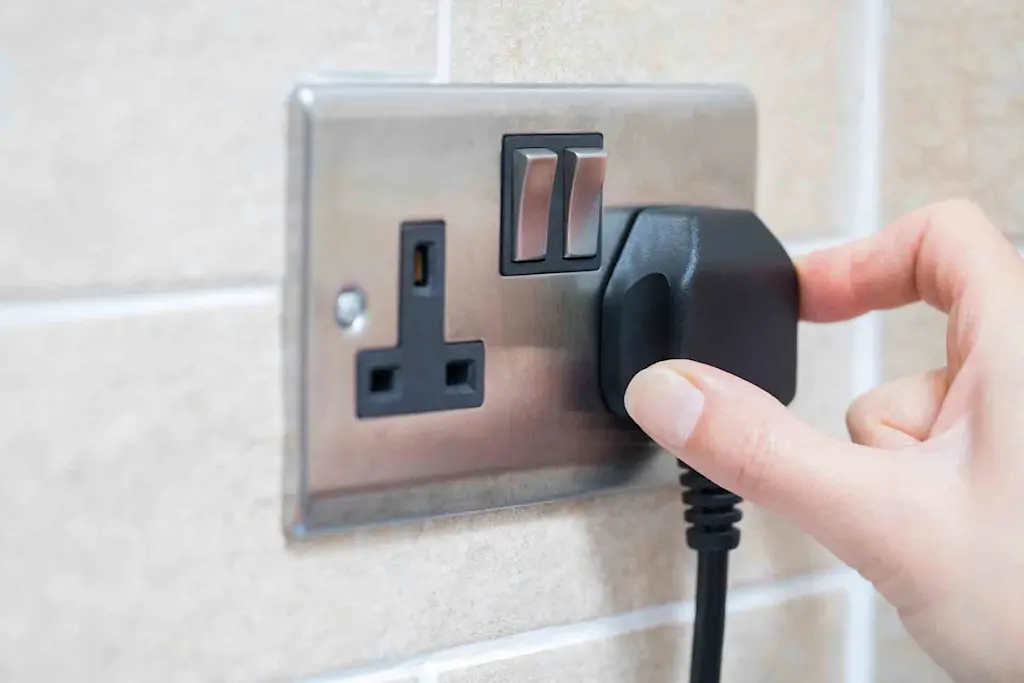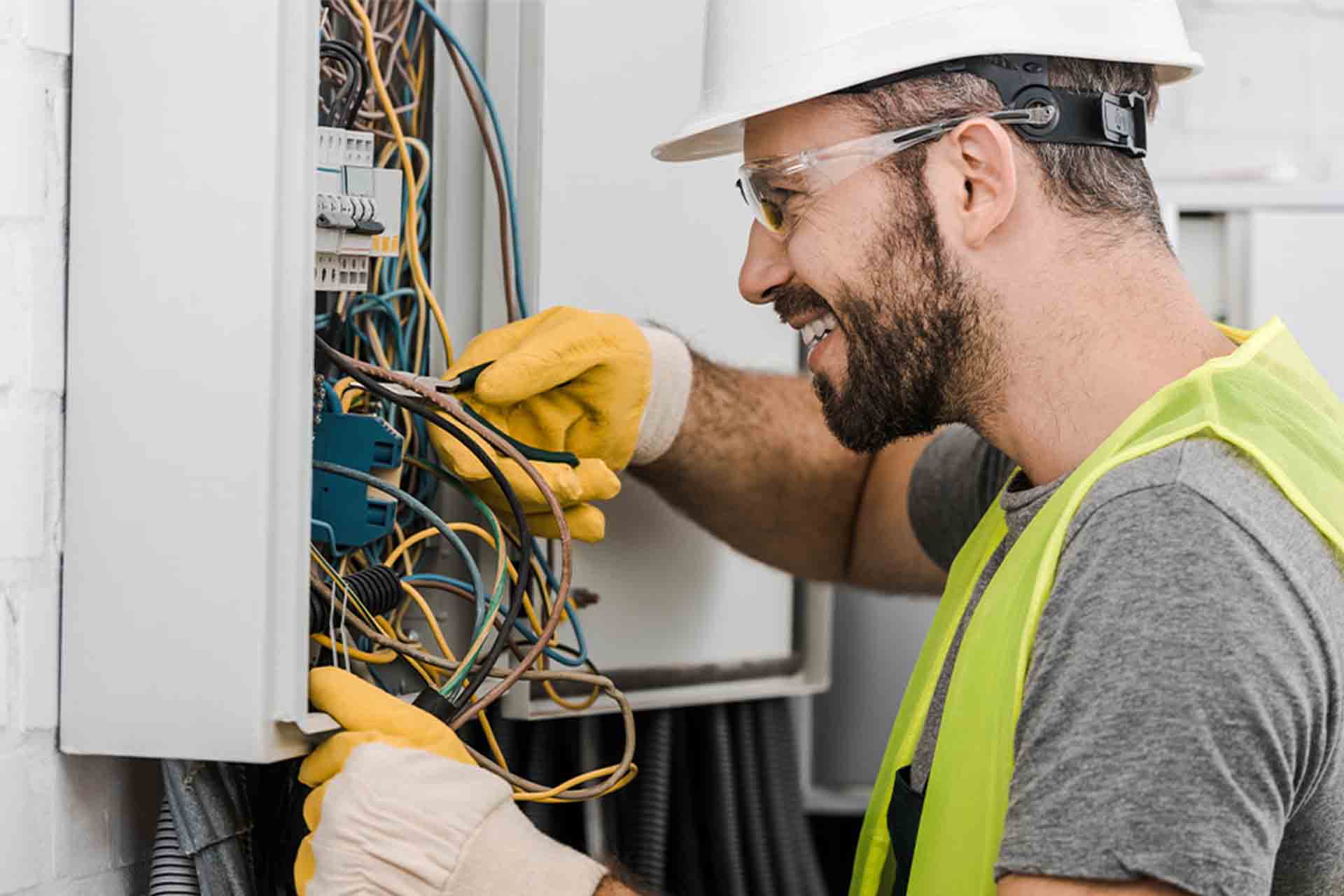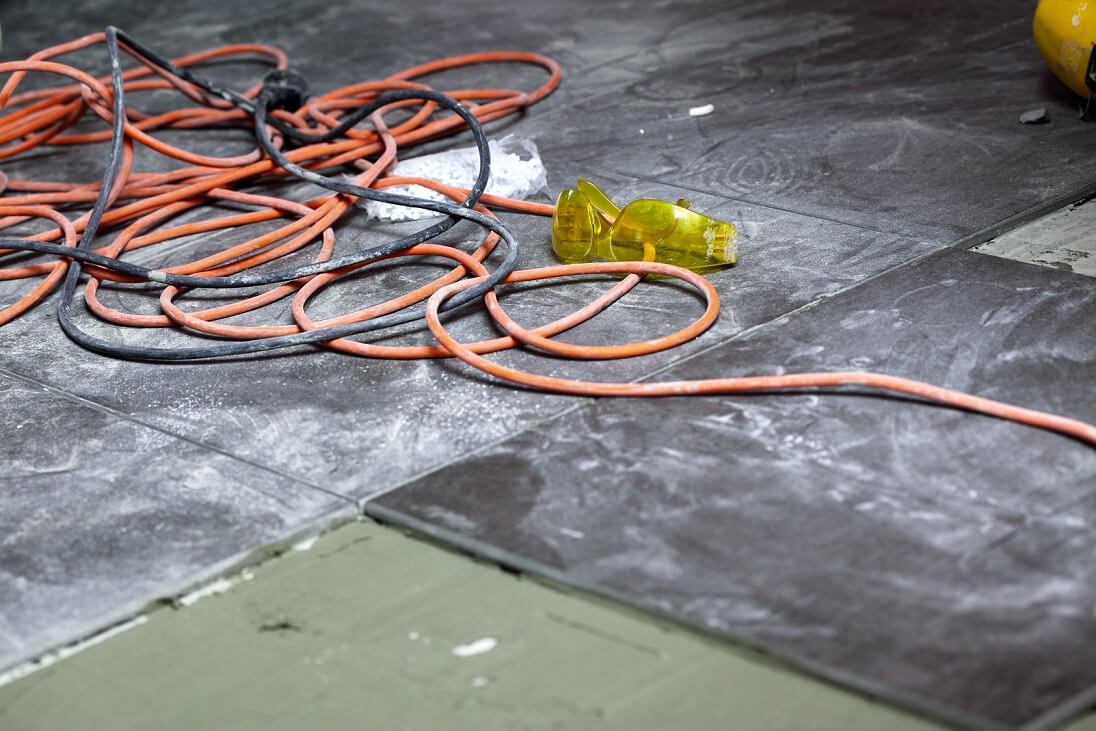Blog>Expert Advice>What's the difference between first and second fix electrics?
Last updated: 6 August 2024
What's the difference between first and second fix electrics?
If you're having a property rewired, you'll need to know the difference between first and second fix electrics. Our guide explains what each electrical stage involves.

If you're planning for a rewire, it's important to understand the difference between first and second fix electrics.
It might be that you've moved into a new property that needs rewiring. Or perhaps you've noticed flickering lights or worn cables. Either way, you'll want to make sure your property's wiring remains in good working condition.
House rewiring typically includes first and second fix electrics. But what does that mean exactly?
Here's everything you need to know about first and second fix electrics so you know what to expect.
Differences between first and second fix electrics
Rewiring a property is typically split into two phases: 'first fix' and 'second fix'.
The main difference is that the first fix is about putting the new electrical infrastructure in place - so the rough wiring of a building.
Whereas the second fix is about safe installation and ensuring the new electrical system is live, connected and working properly.
For safety purposes, you will need to hire a qualified electrician.
See the tradespeople we've checked and recommend for your job
What is first fix electrics?
Generally speaking, first-fix electrics involve the preparation and structural work in the early construction phase.
In this stage of the rewiring process, your electrician will lay the foundations and install the components for the electricity to run through.
First fix parts will be mostly hidden once the project is finished, so they're installed before plastering or internal walls are put up.
Therefore this is the skeleton of the rewiring process to help form the foundations of a home before second fix stage.
Planning for first fix electrics
Are you all tied up in knots worrying about the work and costs of your home's first fix electrics? You're not alone. This critical stage in a new build or renovation project can feel overwhelming. Keep reading to plan and budget with confidence.
What does first fix electrics include?
First fix electrics are the bare bones of the property's electrical system ready for other visible components to be connected up during the second fix.
First fix includes:
Removing the old wiring
Installing all the electrical cables, conduits and wiring within the walls, floors, and ceilings
Positioning sockets, light fittings, and other electrical outlets in agreed positions
Installing back boxes to house sockets, switches, and other electrical fixtures before any furniture or carpets are added
During this stage, all the cables are pulled through to the agreed positions of built-in appliances, lighting and sockets.
What is second fix electrics?
Once the skeleton framework of a rewiring process is complete, professionals move on to the 'second fix'.
The second stage of a rewire will make the electrical system fully operational. This happens after walls have been plastered and insulated.
Second fix electrics are part of the final touches added to a new or renovated space.
Planning for second fix electrics
It's always exciting to see plug sockets, switches, and lighting fixtures finally installed and tested as part of your home's second fix electrics. Here's everything you need to know to ensure this final stage goes smoothly.
What does second fix electrics include?
In the second fix stage, your electrician will fit visible components to the cables installed behind walls and flooring.
This could be plug sockets, switch plates, light fittings, electric cookers and showers.
Second fix includes:
Connecting switches, sockets, outlets, and fixtures to the wiring installed behind walls and flooring (that you can see above the plaster) during the first fix
Upgrading the fuse board if necessary with additional RCDs (residual current devices) to improve safety and take account of extra load
Testing all of the cables for safety
Final checks to verify the safety and functionality of the entire electrical system with certificates issued
Elements such as light switches and power sockets should be safe to use at this stage as long as they've passed all the required tests
Metal plates for 1st and 2nd fix electrics
1st fix
First fix electrics use metal plates to ensure all wiring is secure.
Metal plates are used as backings to meters, switches, outlets and appliance connections for a safe and secure installation.
2nd fix
These offer fire resistance and protect against excess heat exposure in second fix electrics.
Additionally, metal plates will help make sure your installation meets the current standards of building regulations and codes.
Standard v specialist sockets and switches
During second fix electrics, your electrician will fit your choice of sockets and switches. Depending on your aesthetic, there's a range of finishes to choose from, including brushed chrome, plastic or wood effect.
A standard socket connects electrical appliances to a power supply, while a switch is fitted to control the flow of current. You can also get:
USB charger sockets - to help with charging your tech
Smart plug sockets - to control power and set timers via WiFi
How to make a smart home
A smart home has a number of benefits including greater convenience, increased energy efficiency, and improved security. In this post, we explain how to make a smart home and the costs involved.
See the tradespeople we've checked and recommend for your job
FAQs
What step marks the difference between first and second fix?
To put it simply, the first fix takes place before plastering, with the second fix after.
The first fix electrical installation happens when the shell of the house is built or renovated. That is after the property is water and weatherproof but before the plastering.
Meanwhile second fix electrics involve the connecting of the components installed during the first fix. This happens after walls have been plastered and insulated, and completes the electrical works for a space.
Can you rewire a house without removing walls?
The best time to complete a full house rewire is during renovations. This is due to the extensive works during rewiring.
In some cases, an electrician may be able to retain walls while improving wiring. But this will depend on:
Age of existing wiring: Really old cables might need complete replacement
Access routes: Are there crawl spaces, basements or attics for threading new wiring
Complexity of job: How many circuits or outlets do you need?
You need to be aware that rewiring a home will likely involve lifting floorboards and flooring, as well as replacing or repairing walls.
However, an experienced electrician will have the tools and know-how to help keep disruption to a minimum. These include fishing wires through existing walls and ceilings and laying wires into channels cut out of the wall, which can then be plastered over.
How much is a full house rewire?
The cost of rewiring your home will depend on a number of factors, with size, age of property and location being the most important.
The estimated house electrical rewiring prices for a one-bedroom flat fall between £3,000 - £4,800, taking around4-7 days
For a two-bed flat, the cost is on average between £3,800 - £5,800
The average cost to rewire a 3-bedroom house is in the region of £4,450 - £8,000. Depending on the size and layout of the property, it should take6-10 days to carry out the rewiring work
If you’re looking to remove and replace wiring, the average cost to rewire a 4-bed house is somewhere between£6,080 - £9,380. On average, it takes1-2 weeks to complete all the work – though the bigger the house, the longer it will take
The electrical rewiring cost for a 5-bed house can be between £7,500 - £12,500and take up to10-15 days
Head to our cost guide for rewiring a house for more information.
How long does a full house rewire take?
As a rough guide, rewiring a house takes between 4 and 10 days. However this will depend on the size of your home, for example, the larger the property, the more wiring might need replacing.
Why rewire your home?
It’s often very difficult to spot electrical issues yourself. The best way to find out if your house needs rewiring is to hire a qualified electrician to carry out an Electrical Installation Condition Report (EICR).
That said, there are a number of signs that could indicate there are problems with your home’s wiring.
These include:
Your consumer unit trips out regularly
Your hear a crackling or buzzing noise around any of your electrical sockets or equipment
Fuses or bulbs keep blowing regularly
You see any electrical wires covered in black rubber, lead or fabric
Signs of discolouration or burning around any electrical fittings
Flickering lights
Old electrical installations can become dangerous and pose a risk to users if they no longer meet the latest British safety standards.
You may need to upgrade your electrical system if you have an out-of-date fuse box. You can check this by looking at the date on the consumer unit - there's usually a printed label on the inside of the consumer unit door.
Ready to go ahead with a rewiring job? Enter your postcode in the search bar below to find recommended electricians in your area.
See the tradespeople we've checked and recommend for your job
More Expert Advice Articles
See the tradespeople we've checked and recommend for your job








